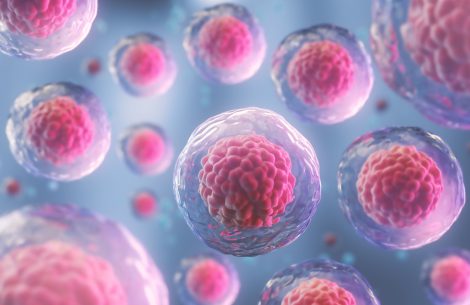As healthcare practitioners look to improve medical treatments, they are examining closely the prospects of the body’s stem cells, which can reflect many conditions.
Stem cells are described as “raw materials” and generate other specialized cells in the body. More and more, these stem cells are having a growing importance for medical treatments.
Clinicians’ use of stem cells is known as stem cell therapy or regenerative medicine. Through its use, stem cells can promote the repair of diseased, dysfunctional or injured tissues. It is considered at the forefront in organ transplantation, which uses the cells of donor organs.
Stem cells also have the potential to be grown to become new tissue for use in transplants.
Doctors have performed bone marrow transplants, to replace cells damaged by chemotherapy or disease.
Researchers use stem cells not only to figure out how to understand how diseases occur, but how they develop and in some cases can be decreased, such as cancers or blood-related diseases.
The path of stem cells
With stem cells’ potential to develop into many different cell types, they can regenerate and repair diseased or damaged tissues. How they divide is important. Each new cell that results can remain a stem cell or become a specialized cell, in the brain or blood, for instance. Stem cells can evolve into cells in the nerves, heart muscles, bones, and other organs. They can divide and replenish other cells, according to the Mayo Clinic.
Potential Benefits of Stem Cell Therapy
People who might benefit from stem cell therapies include those spinal cord injuries, type 1 diabetes, Parkinson’s disease, Alzheimer’s disease, heart disease, stroke, burns, cancer and osteoarthritis, and other ailments.
Skin Replacement
Other therapies utilizing stem cells include skin replacement from adult stem cells harvested from hair follicles that have been grown in culture to produce skin grafts.
Checking into Drugs
Researchers use some types of stem cells to screen drugs for safety and their quality.
Research on stem cells continues to advance knowledge about how an organism develops from a single cell and how healthy cells replace damaged cells in adult organisms.
Embryonic
Embryonic stem cells come from embryos that are only three to five days old. The embryo is called blastocyst and has more than one hundred cells, including specialized cells for parts of the body. Because such cells are taken from human embryos, there have been questions about the ethics of such research.
Generating new cell types
Stem cells divvy up and form new cells known as daughter cells. They can become new stem cells, or specialized for various parts of the body. No other cell in the body has the natural ability to generate new cell types.
Adult stem cells are found in adult tissues, including bone marrow. They can also replace damaged cells.
Stem cell potential
Many believe that stem cells offer great potential to treat diseases, but clinicians also believe more work needs to be done.
References:
- Melissa Conrad Stopper, MD. Medical Editor: William C. Shiel Jr, MD, FACP, FACR. Stem Cells. 2017. Medicine Net. Retrieved from: www.medicinenet.com
- Mayo Clinic Staff. Stem cells: What they are and what they do. 2018. Retrieved from: https://www.mayoclinic.org/tests-procedures/bone-marrow-transplant/in-depth/stem-cells/art-20048117
- Dana Dovey. 5 Stem Cell Innovations From The Past Year, From Cancer Treatment to Diabetes Therapy. 2017. Medical Daily. Retrieved from: https://www.medicaldaily.com/5-stem-cell-innovations-past-year-cancer-treatment-diabetes-therapy-416442
- A Closer Look At Stem Cells. Nine Things To Know About Stem Cell Treatments – A Closer Look at Stem Cells. 2018. Retrieved from: www.closerlookatstemcells.org
- University of Nebraska Medical Center. Importance of Stem Cells. 2018. University of Nebraska Medical Center. Retrieved from: https://www.unmc.edu/stemcells/educational-resources/importance.html

